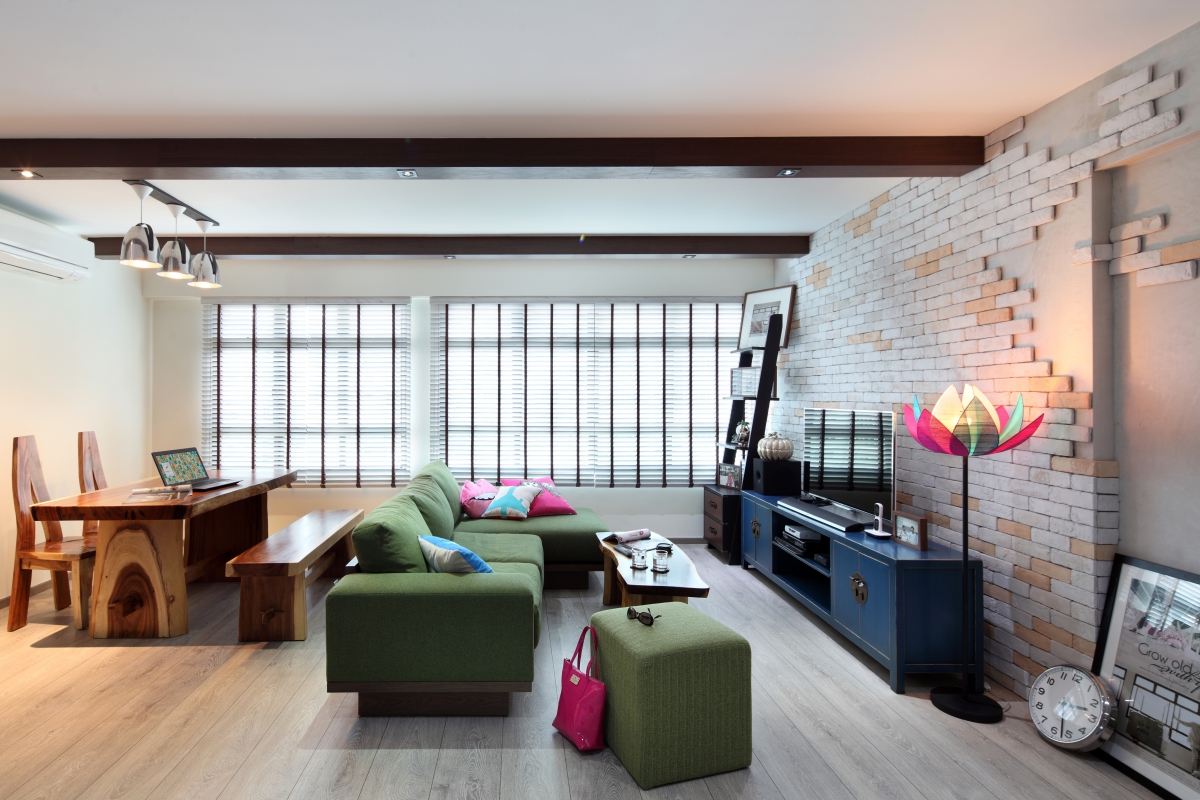HOW TO GET RID OF MOULD AND BLACK DOTS FROM FLOOR?
Interior Design & Decor5 minutes read
2057 views
2057 views
Wood flooring is natural, environmentally friendly and it is comfortable. However, its disadvantage is that it can form mould and black dots will appear if you don’t take care of it nicely. So how to get rid of mould and black dots from floor?
Why there are mould and black dots on floor?

The mouldy and blackened floor is due to the water vapor. There are four main reasons:
1.The mop is too wet when you clean the wood floor
If the mop is too wet, the water will penetrate into the gap in the floor. If the wood floor is wet for a long time, the moisture content of the floor will be high, which will cause mould to grow and make the floor mouldy and become black. And the floor can be corroded at worst.
2.Water spilled on the floor and was not cleaned in time

Water spill on the floor from time to time. You may not be aware of this trivial case, but if you let the water dry naturally, the water will go into the floor and mould will grow. Therefore, you should dry the floor whenever you see water on it.
3.The floor is not dry completely after soaked with water

If you forget to turn off the faucet and the water pipes leak, the floor will be soaked. The is a very serious situation but many people will just wipe the surface.
This is a wrong dealing method. If the problem is not so serious, you can use a vacuum cleaner to dry the water vapor on the surface and gaps of the floor. Take out the skirting to let the floor dry as well. If the soaking is too serious, you need to remove all the floor for drying. Otherwise, the water vapor will accumulate inside the floor that cause mould and damages.
4.Pave the wood flooring when the floor is not dry completely
Some workers may rush to finish the job and pave the wood flooring on the floor that is not completely dry yet. As a result, water vapor is accumulated inside, and the water vapor can only be released through the gap on the wall, leading to a mouldy and blackened floor.
Mouldy floor is divided into surface and internal, and the treatment methods are different:
1.Mould on surface

You can use a homemade cleaning detergent (mix the bleach and water at a ratio of 1: 3. The bleach concentration should not be too high). Wipe the mould with a soft cloth with detergent. Or you can sand the mouldy places with sandpaper and repair by re-spraying.
2. Mould inside the floor

If only a few pieces of the floor are mouldy, it is best to remove them and replace with new flooring pieces. Having mould inside means the floor has become rotten. It is no use to repair the floor surface in this case. Another effective method to reduce the chance of having mouldy floor is to lay bamboo charcoal on the floor.
Bamboo charcoal can absorb moisture. When you lay bamboo charcoal under the floor, they will absorb the moisture away, which can effectively reduce the mould inside the floor. But the bamboo charcoal is not very environmentally friendly, so don’t use it too much.
Now you know the reasons of having mouldy floor. Remember to dry the floor immediately whenever you see water on it. Pave the wood flooring only when the floor is completely dry. This is very important. For paving bamboo charcoal, as it is not environmentally friendly, so don’t use it too much.
The content and pictures of this article are provided and uploaded by the author. It does not represent the opinion of the company. If there are any copyright issues, please contact us.
This article was originally published on HKDecoman.
HKDecoman, now going global as Deco-Man, is a Hong Kong-based renovation platform which provides professional consultancy services and pioneers in the development of A.I. homeowner-engineer matching. We aim at educating the public about the art of home renovation, and have our eyes on transforming the traditional renovation industry, bringing standardisation, transparency, convenience and automation to the business.
Request for quotes and we'll match you with a selection of Interior Designers!
Previous
AMERICAN TOWN STYLE: COSY COTTAGE


 Sign Up with Google
Sign Up with Google

.jpg)


